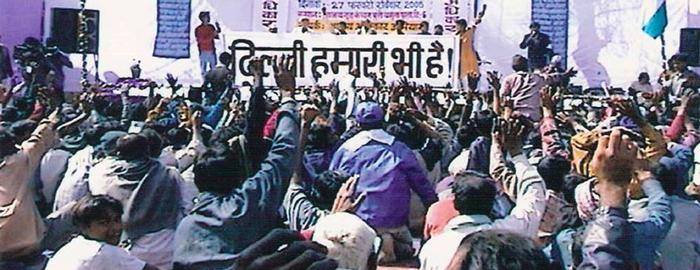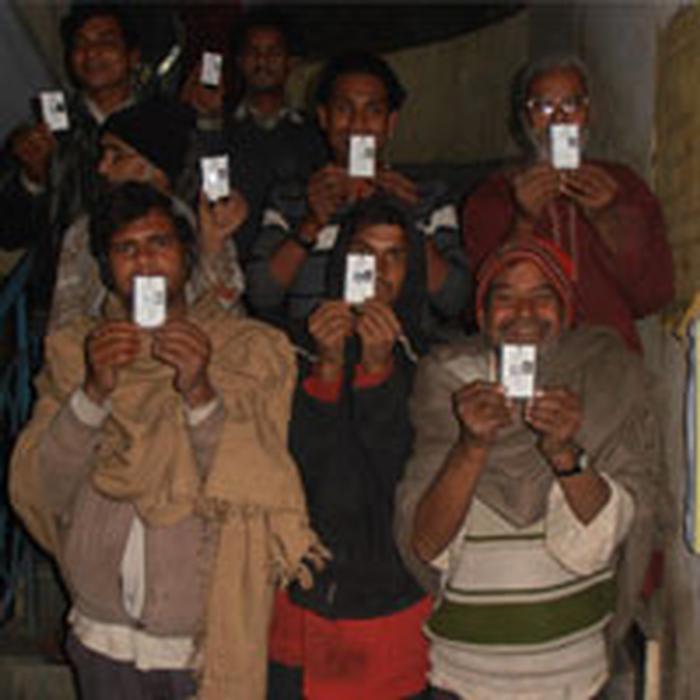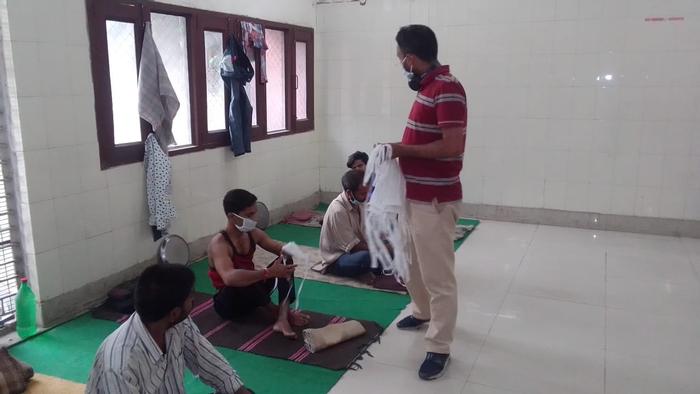Gauri Patra - ProposalFundamental right to the city for the invisibleAlmost 10 years ago, a leading newspaper published on its front page a photo of people shivering in the cold,while the Municipal Corporation of Delhi (MCD) destroyed their temporary night shelter to ‘beautify’ the place for the 2010 Commonwealth Games. It’s been 10 years and still most of the citizens who were evicted are living as urban nomads. The large-scale slum demolitions, associated with the restructuring of Delhi to meet the ideals of its globalization-in-the-making, have engendered an additional and significant section of shelter less people, victims of evictions who can be described as the true homeless. Highlighting the major issue of homelessness and bringing it into public domain Aashray Adhikar Abhiyan (where 'Aashray' means one who gives shelter, 'Adhikar' means been given the power to and 'Abhiyan' means campaigning)came into existence in the year 2000 as a campaign and now a non-profit government organization for the rights of urban homelessness in Delhi. Since then it has been working in Delhi towards realization of the rights of the homeless people as enshrined in the Constitution of India as well as in various International Conventions and Treaties. Their organization was the first one constructing a first ever shelter for homeless women & children in Delhi. They work with local communities, collaborate with the Government, NGOs, Developers, contractors, corporates and individuals engaging with the Architectural community and collaborating alongside Delhi Urban Shelter Improvement Board (DUSIB). They work on creating structures that help create and encourage humane and living conditions for construction labourers. They have also developed porta cabins in the past as a step towards permanent housing solutions. They also work on resettlement programs for those who have become homeless because of slum clearing policies. Other than their housing programs they conduct various health outreach services for the homeless and various programs serving every age group of the community. With their aim to empower, strengthen and mobilize the homeless people so that they are able to assert their rights in order to live with honour and dignity they also help them provide with national identity through advocacy and meetings so that they can participate in decision making and have future opportunities for secure tenure and housing rights. Homelessness impacts all of us, whether or not we experience it ourselves. Most homeless people live on the streets of cities, under bridges, on highways or in any place they can seek refuge. It is a human tragedy. Our own community members live in tents and under bridges, vulnerable to harsh weather and violence, stripped of dignity and our collective respect. Moreover, women are more prone to abuse, trafficking and harassment, especially if they live on their own or as single mothers. It is also a public health problem. Without their own housing comes the problem of lack of sanitation, people who are homeless have to often relieve themselves outside. They lack access to health care and often have chronic illnesses, made worse by tough living conditions: sleeping outside in all weather, picking and eating food from trash, etc. Additionally, illegal squatting makes up a majority of the slum population, so many families live in fear of eviction. When we think about what causes homelessness, we often think about addiction, mental illness, domestic violence, job loss, and disabilities. And those are all accurate demographic characteristics of the homeless population. In our own communities and homes we all know people who are alcoholics, who are on medications for mental health problems like depression, we may know of people who have experienced domestic violence or trauma and especially this year we may know of people who have lost their jobs in this pandemic due to the tough economy. The difference between people who experience those challenges and become homeless and people who experience them and don’t lose their housing is simple: it’s support. If we have a strong support system, we have one less challenge to overcome. Aashray Adhikar Abhiyan (AAA) provides this support by understanding every challenge faced by the homeless. They don’t just provide a roof over their head; they interact with them on a daily basis catering to their every need. They understand the background behind each an every individual and what they have been through. My BP2021 essay proposal dealt with creating dwelling units for the homeless citizens in abandoned high rise buildings. Similarly, AAA has been working upon collaborating with government civil society organizations to use abandoned buildings as shelters for the homeless as a solution for permanent housing. This opportunity will help me develop my skills other than design, teaching me how to use innovation to help people with a direct need for all that is fundamental within architecture: shelter, warmth, access to clean water, and — most of all — places around which people can build their communities giving a chance to further my proposal. I would like to use this opportunity to work as a volunteer in Aashray Adhikar Abhiyan for 6 weeks under the guidance of Dr. Sanjay Kumar, Co-director at AAA who is presently focusing on development issues and social policy. I have contacted Dr. Sanjay and have received their confirmation. I believe this experience would give me an insight into the severity of these issues and would give me a chance to explore the field of humanitarian architecture. This will be not only be a major addition and benefit for my architectural education but will also give me a chance to connect with the most important people in the design process-the end users. Working within such a group would give me an opportunity to learn a great deal about development and coordination of such programs. SCHEDULE: The overall length of the time for my volunteering activities will be between six to eight weeks, volunteering preferably five to six days a week (starting tentatively from June 2021). The schedule will be confirmed by Dr. Sanjay at the end of this month. BUDGET: Vikaspuri,New Delhi(home) to Shakarpur,New Delhi(organization)- two-way taxifare- (approx. 14$ a day for 8 weeks) -660$ Visiting existing shelters and projects nearby for research purposes – (approx. 7$ a day for 8 weeks) -330 $ Food and other costs-(approx.12$ a day for 8 weeks)- 570$. Total cost-1560$. REFERENCES- Aashray Adhikar Abhiyan – Email: aashrayadhikarabhiyan4u@gmail.com, creatinghomes@yahoo.co.uk,Website- www.homelesspeople.in, Dr. Sanjay Kumar- Email: sanjaykrishna.sk@gmail.com.
Additional Help and InformationAre you in need of assistance? Please email info@berkeleyprize.org. |



